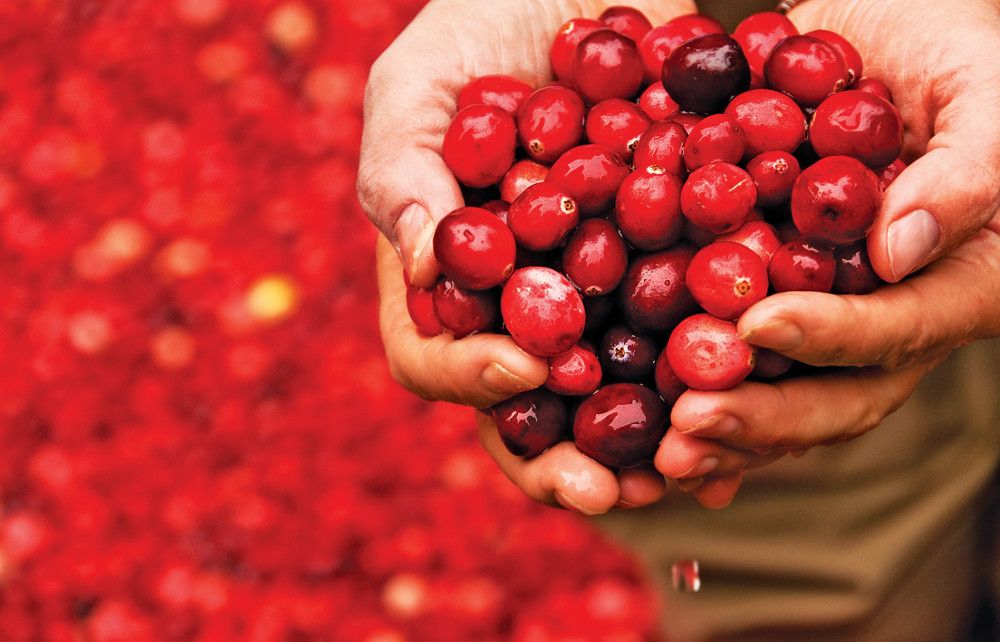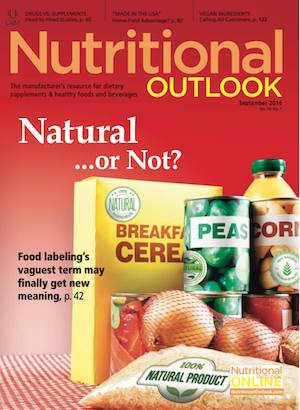How Should We Market the Cranberry?
Which marketing message for cranberry will most likely hit home with consumers?
Photo © iStockphoto.com/Phil Cardamone

Anyone who’s followed ingredient sales in recent years won’t be surprised to hear that cranberry is once again posting stellar growth in dietary supplements. Propelled by mounting research behind the anti-adhesive benefits of cranberry proanthocyanidins (PACs) for urinary tract infections (UTIs) and other health areas, sales of supplements with cranberry as a primary ingredient grew by approximately 22% in the past year to reach a total U.S. market value of nearly $80 million, according to SPINS.1
That’s exciting, but what might be even more thrilling is the rapid rise of cranberry food and drinks. Over the same period, food and drinks featuring cranberry as a primary ingredient grew by more than 117% to reach total U.S. sales of more than $21 million. Given cranberry’s long history on the market, why the sudden interest from consumers?
Water, Peanut Butter Cups, and More
One factor driving growth may be the sheer number of new cranberry products that have emerged in the past couple of years. Cranberry supplier Fruit d’Or Nutraceuticals (Notre-Dame-de-Lourdes, QC, Canada), for instance, recently unveiled a chocolate peanut butter cup with cranberry seed protein powder and probiotics that’s now on its way to market. Also in the development pipeline are cranberry–probiotic gummies and new organic cranberry juice powders, according to Fruit d’Or.
One of the most visible brands in the cranberry space, Ocean Spray (Lakeville-Middleboro, MA), says different delivery systems are proving popular with consumers. In addition to its PACt cranberry extract water, which debuted in late 2014, Ocean Spray has seen success with its cranberry mango juice drink, Cran-Mango, as well as its line of Craisins dried cranberry snacks.
“The cranberry is such a versatile, amazing fruit,” says Patrick Cramb, Ocean Spray’s director of marketing for beverages. “The possibilities are endless.”
The Best Message
There are several different philosophies on which cranberry marketing message works best on consumers. Should the power of cranberry PACs, for instance, be a key selling point?
According to Cramb, “While consumers may be more familiar with terms like antioxidants, they do understand that other components, like PACs, provide valuable health benefits.”
Stephen Lukawski, director of business development and global sales for Fruit d’Or, agrees. He’s urging manufacturers to embrace PACs in marketing campaigns so consumers have an efficacious component of the cranberry to focus on.
“Without the story of PACs, there is no identification for the consumers to connect with,” Lukawski says.
Meanwhile, Dan Souza, vice president of sales and marketing for botanicals firm Naturex (Avignon, France), claims it’s actually cranberry’s researched health benefits that should be front and center.
“Formulators in the know are moving away from focusing on a single marker such as PACs and seeking out ingredients with published clinical results for targeted health benefits,” he says.
Dean Mosca, president of cranberry supplier Proprietary Nutritionals (Kearny, NJ), also believes consumers are relatively unfamiliar with PACs. But he also cautions against focusing too closely on particular health areas, instead advising marketers to more generally share how PACs work.
“American consumers are conditioned to be skeptical of multiple powers of one ingredient,” Mosca says. “So, the way to tie in all three areas is by virtue of its key mechanism of action-focus on its anti-adhesion power as the primary benefit, and explain that anti-adhesion supports urinary tract, gut, and oral health.”
Perhaps, as the cranberry food market matures, a more uniform marketing consensus will emerge. But, then again, judging by the sales figures, maybe consumers like all these messages just fine.
Also read:
Cranberries and the Future of UTIs
Ocean Spray Aims to Keep Its New Cranberry PACs Campaign “Consumer Friendly”
Naturex, Mazza Sign Agreement for Cranberry Extraction Process
Disclosures:
- Sales data represent year-over-year sales for the 52 weeks ending August 7, 2016. These figures are aggregated across all three SPINS reporting channels: SPINSscan Natural, SPINSscan Specialty Gourmet, and SPINSscan Conventional.

Prinova acquires Aplinova to further increase its footprint in Latin America
April 7th 2025Prinova has recently announced the acquisition of Brazilian ingredients distributor Aplinova, which is a provider of specialty ingredients for a range of market segments that include food, beverage, supplements, and personal care.

























